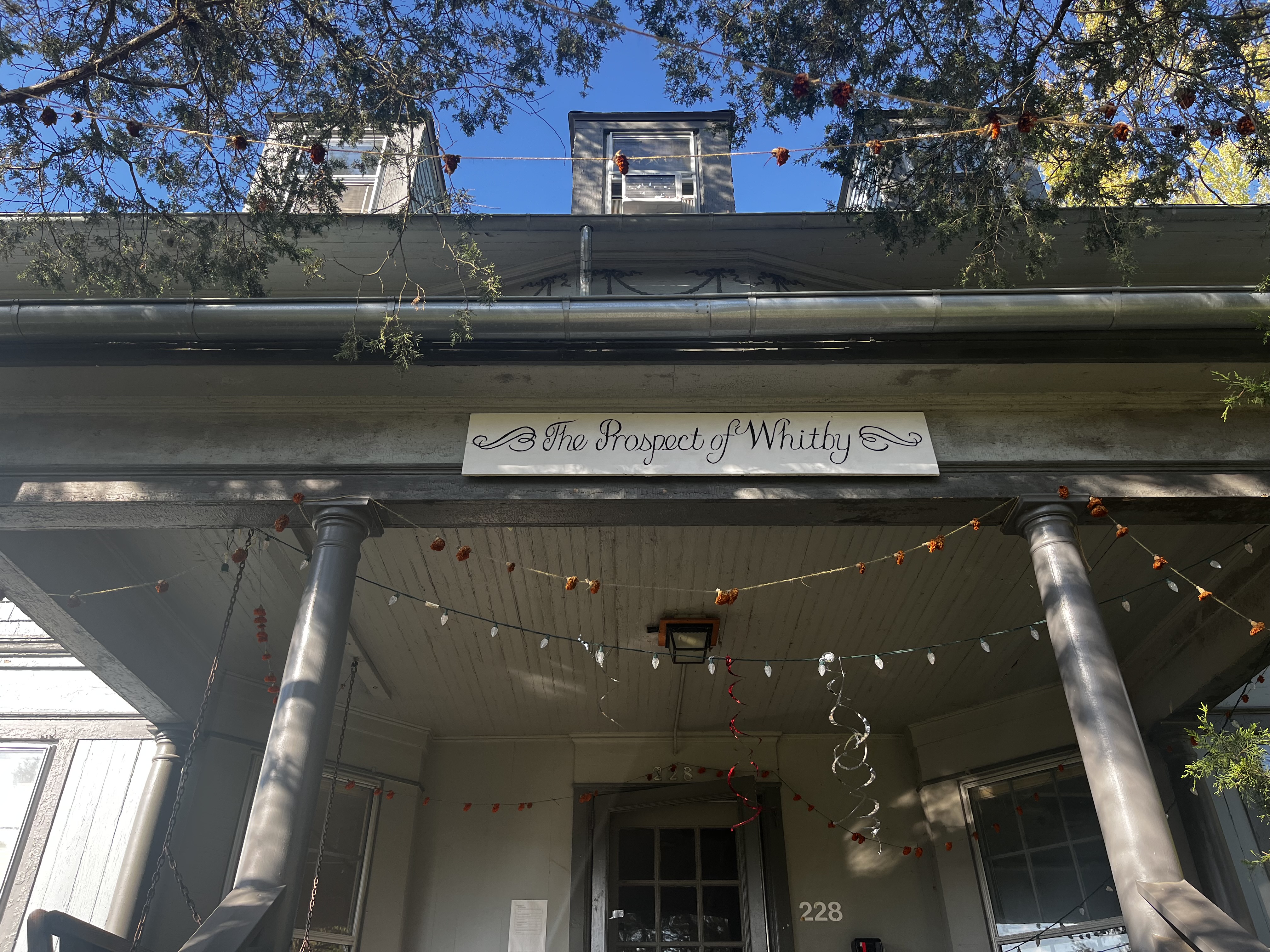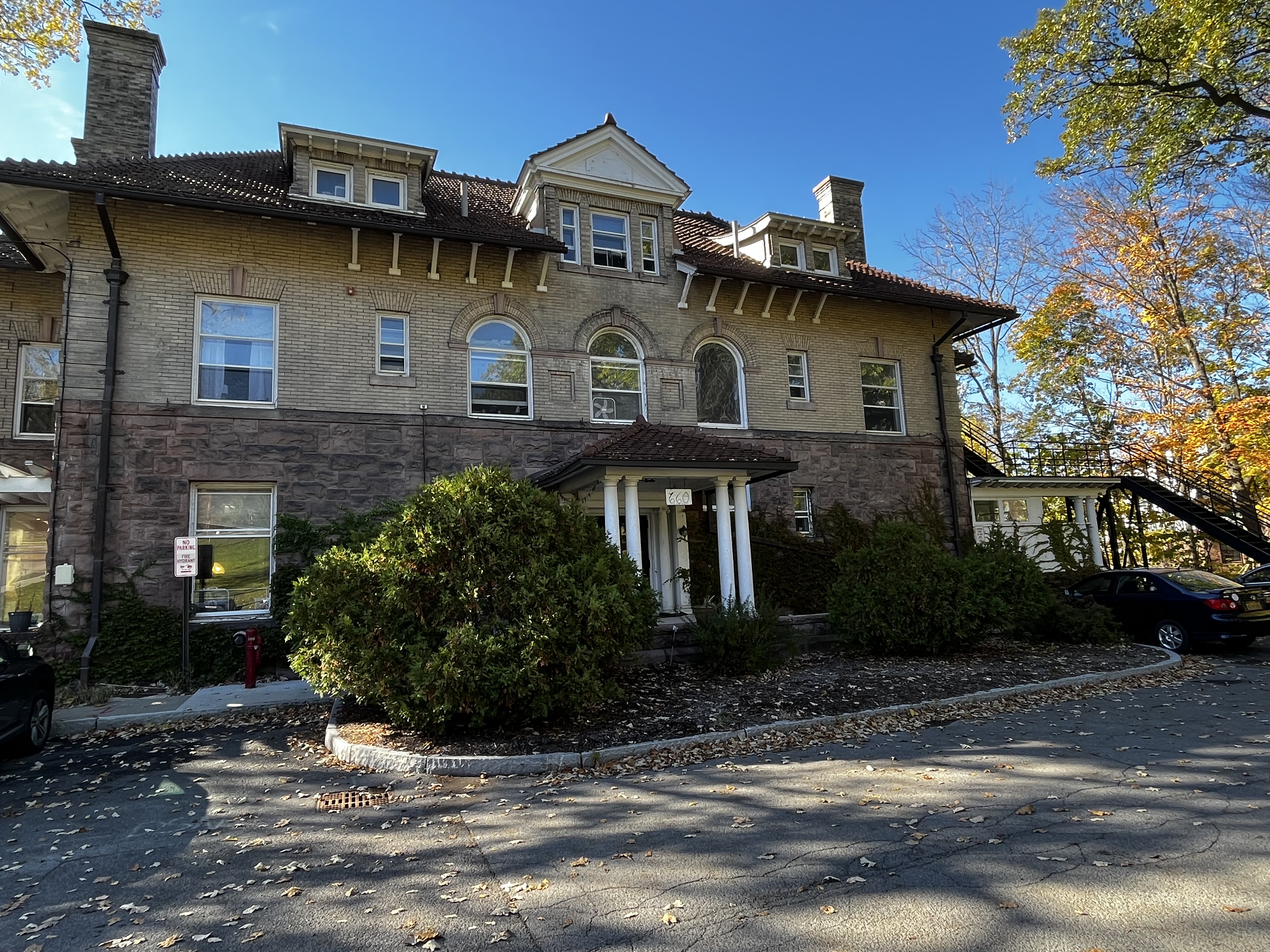A look inside cooperative living at Cornell
By Kelly Kuehn, Student & Campus Life
A Cornellian’s residential experience often provides the secure foundation they need for a successful and transformative time on campus. The access to built-in support systems, academic resources, dining and fitness facilities and diverse communities that encourage growth and collaboration is invaluable and helps set students up for long-term success. However, no two Cornellians are the same, with some seeking an alternative residential experience to what’s typically seen on North, South and West Campus.
That is where cooperative living, another form of on-campus housing at Cornell, comes into the picture.
What is cooperative living at Cornell?
Cooperative living is a unique and collaborative housing experience on Cornell’s campus. The houses (often referred to as “co-ops”) are owned and managed by the university, but led by student residents. Peers come together to collaboratively draft co-op house rules, oversee household operations and chores and hold meetings to vote on key house decisions, giving every member of the co-op a chance to have their voice heard. Cooperative living provides a more hands-on residential experience compared to other on-campus residential spaces — and it’s one of the most affordable housing options on Cornell’s campus. Each house can have anywhere from 10 to 35 members. Currently, 156 students call a co-op "home" at Cornell. Five co-ops have meal plans, and all co-op spaces have shared kitchens.
The history of cooperative living at Cornell

Cooperative living was established in 1947 with the Watermargin house, which housed World War II veterans seeking to create a space where students of any race could gather, learn and grow together. That mission and dedication to belonging and community was the foundation for Watermargin, and ultimately, the other co-ops founded on campus.
Today, Cornell is home to eight co-op living spaces:
- Prospect of Whitby
- 660 Stewart Avenue
- Triphammer Cooperative
- Redbud Cooperative in Von Cramm Hall
- Wait Avenue Cooperative
- Wait Terrace
- Wari Cooperative
- Watermargin
How do students benefit from living in co-ops?
Co-op living gives students the opportunity to live in a smaller, tight-knit group where they define their role and grow with fellow Cornellians. Adam Alnasser ’23, who lives in the 660 Stewart Avenue co-op says those co-op community ties stretch beyond the walls of a particular house. “It’s not a vacuum,” Alnasser explains. “It’s not like if you live in 660, you can never talk to anyone in Redbud or Triphammer ever again. I think there’s a really strong cooperative community with all the co-ops.”
Co-ops also provide students with a sense of belonging in a peer group, some of them for the first time ever. It’s that access and support that helps students find their people and themselves.
“A few years ago, I went to a Lavender Graduation ceremony and each student put the name of a person in the program who most supported them in their coming out process and then talked about that person as they were called up during the ceremony,” recalls Julie Paige, Director of Off-Campus, Cooperative, and Graduate Living. “Each Whitby student listed “Fred Whitby” as their supporter – the euphemism for Prospect of Whitby co-op. The four Whitby students came up to stage at the same time to share how the co-op was their support in their coming out process.” Powerful moments like this happen frequently through the cooperative housing community.
How can living in a co-op contribute to the overall growth and well-being of Cornell students?
Co-op living offers Cornell students a rare opportunity to be an active part of a community governed by peers, which comes with its own set of roles, responsibilities and skills. Students are elected to leadership roles within the co-ops and it’s them, not staff, who manage house finances and operations.
Sofya Maslova ’24, a co-president within Prospect of Whitby, says some of the co-presidential responsibilities include working with staff like Julie Paige, Facilities Management and Business Services to scope and budget for large housing updates, like a new roof or new windows. Co-op leaders also help resolve conflicts within the houses and provide resources for members when needed. Even those not in leadership roles can develop key skills through communal living, including collaboration, communication and resource management.
Members don’t leave those skills at the door once they walk out of their co-op; they apply those skills to other endeavors, whether it’s participating in a student organization, learning in the classroom or starting their first post-college job.
Learn more about co-op living

The best way to learn more about co-op living is to participate in the Fall and Spring Co-op Moseys. The Fall Mosey, happening on Saturday, Nov. 4, is hosted for spring semester openings, and the Spring Mosey, happening on Sunday, Feb. 11, is hosted for spots open in the 2024-2025 academic year.
During a Mosey, students can learn more about co-op living, as well as hear about current co-op members’ experiences. It starts with an open house in the afternoon, followed by a two-week selection process where students explore specific co-op communities. If students can’t make the Mosey, they can email co-ops@cornell.edu for more information, or learn more on the Cooperative Housing page on Student and Campus Life’s website.
